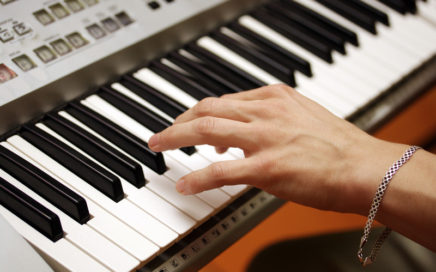
A Simple Way to Create an Interesting Verse Progression
If you like the chords-first songwriting process, but lately you’re coming up dry when it comes to good chord ideas, try this: Create a short, simple, 3-chord progression in some major key: I-IV-V-I (example: C F G C) Repeat that progression. Follow it with the relative minor equivalent of that: vi-ii-iii-vi (example: Am Dm Em […]














